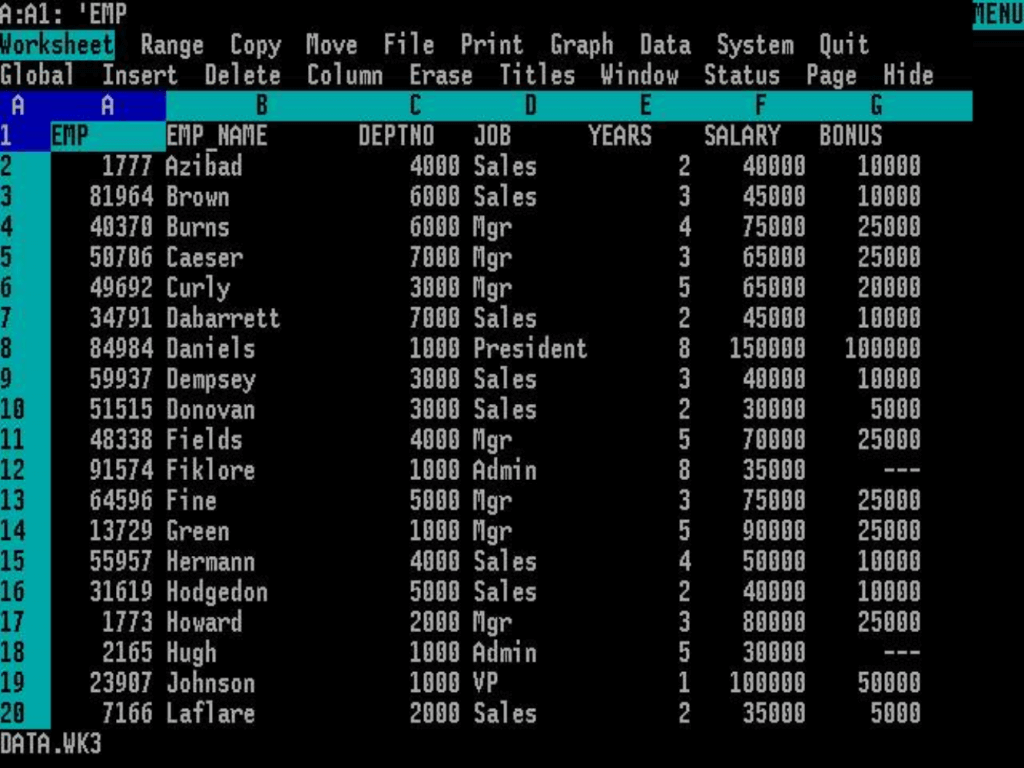Lotus 1-2-3 Day
Lotus 1-2-3 Day is observed next on Monday, January 26th, 2026 (102 days from today).

Lotus 1-2-3 Day is a celebration which is observed annually on January 26th.
What made 1-2-3 special?
In a word, speed. 1-2-3 is written in assembly language, "closer to metal" as computer geeks say. Writing in that computational assembly language is harder for programmers than using a high-level language like C, but the generated programs run much faster on today's coding computers. In other words, let programmers endure the pain of coding in a language that is Greek to them - users reap the rewards when their programs run quickly.
In addition to the assembly origin, 1-2-3 uses special graphics processes that write directly to the IBM PC's video memory, rather than passing each character through the operating system to draw to the screen. This design decision has two results: first, it makes the screen update faster (making the program more responsive to user actions like scrolling); second, it means the application is locked to the IBM PC hardware. Locking your application into the IBM PC hardware ecosystem was a moderately intrepid business move at the time; if 1-2-3 fails on IBM PC, it will be difficult to port it to another platform because of all the IBM-specific coding (assembly and custom graphics). Applications like VisiCalc exist on many platforms, although they often don't perform well, in part because it has to serve a variety of systems.
That PC-specific decision by IBM was also important when PC clones began to appear. When you buy a PC clone in the 1980s that promises "100% compatibility" with an actual blue IBM machine, it's a nod to apps like 1-2-3 based on specific quirks of the IBM PC video system. Without perfect compatibility a clone can't run 1-2-3 and actually testing your clone against 1-2-3 is one way to know if it's ready for prime time or not. This leads to a homogenous IBM clone landscape, while the rest of the personal computer industry is creating various competing systems with their own software ecosystems - some good, some great, some bad - but none of them can run Lotus 1-2 -3 in its original form.
In addition to its speed, 1-2-3 offers charts and graphs, macros, basic database functions, and can even be used as a simple word processor. Because it has an extensive feature set and fast speed, an office worker born in 1983 can spend a whole day in 1-2-3 and get a lot done.
History of Lotus 1-2-3 Day
Lotus 1-2-3 Day marks the anniversary of the day in 1983 when the Lotus 1-2-3 spreadsheet program, a three-in-one (1-2-3), database manager data and graphics package, released as an application for IBM PC. We take it for granted today that we have an Internet-connected phone in our pocket, but there was a time in the early 1980s when spreadsheets were the wave of the future. January 26 every year we celebrate them, especially Lotus 1-2-3.
In 1982, Mitch Kapor and Jonathan Sachs founded Lotus Development Corporation. Kapor previously worked for VisiCalc, which became a competitor. In 1979, VisiCalc was released for use on the Apple II and became the first killer app: a piece of software so good that it made an entire computer system worth buying. VisiCalc automates basic calculations, saving office workers time as they no longer have to do manual calculations. It can also forecast the budget by easily adjusting the numbers.
IBM PC launched in 1981. After the release of Lotus 1-2-3, it became the killer application. It is written in assembly language, which is more difficult to write than other languages but allows programs to run faster and use less memory. Lotus 1-2-3 has a "special graphics process" that is written directly to the computer's video memory. This allows the screen to update faster and causes the application to be locked to IBM hardware. The encryption is IBM-specific, so it would be difficult to move it somewhere else.
Lotus 1-2-3 was faster than VisiCalc (and other spreadsheets) and soon surpassed it. PC clones of the 1980s made sure they were compatible with IBM PCs, to highlight how they worked with applications like Lotus 1-2-3. The application was notable at the time for its plethora of features, including charting, graphing, basic database functions, macros, and some word processing. Many applications on floppy disks are no longer needed. IBM took over Lotus Development Corporation in 1995, and it became Lotus Software. However, since 2013, the brand name was stopped production.
How to celebrate Lotus 1-2-3 Day
Why not celebrate this day using a spreadsheet! Obviously, the best way to celebrate is to get to know your old IBM PC and use Lotus 1-2-3. If you can't use this spreadsheet, celebrate by using one of the many popular spreadsheets in use today, such as Microsoft Excel or Google Sheets.
Observed
Lotus 1-2-3 Day has been observed annually on January 26th.Dates
Friday, January 26th, 2024
Sunday, January 26th, 2025
Monday, January 26th, 2026
Tuesday, January 26th, 2027
Wednesday, January 26th, 2028


